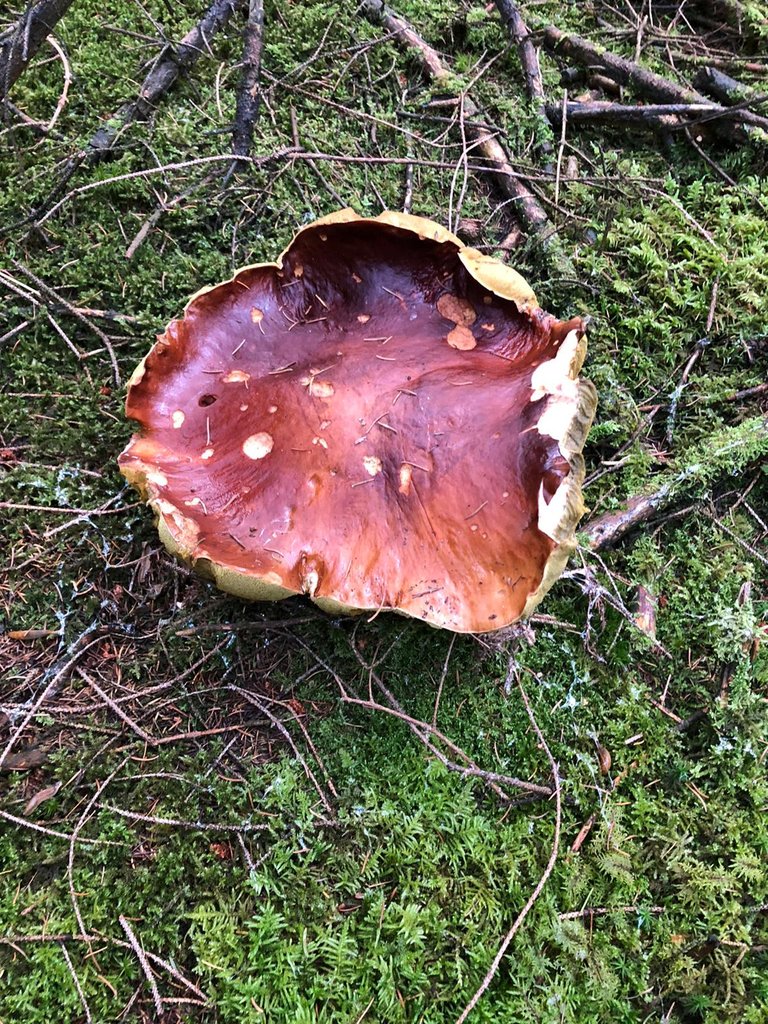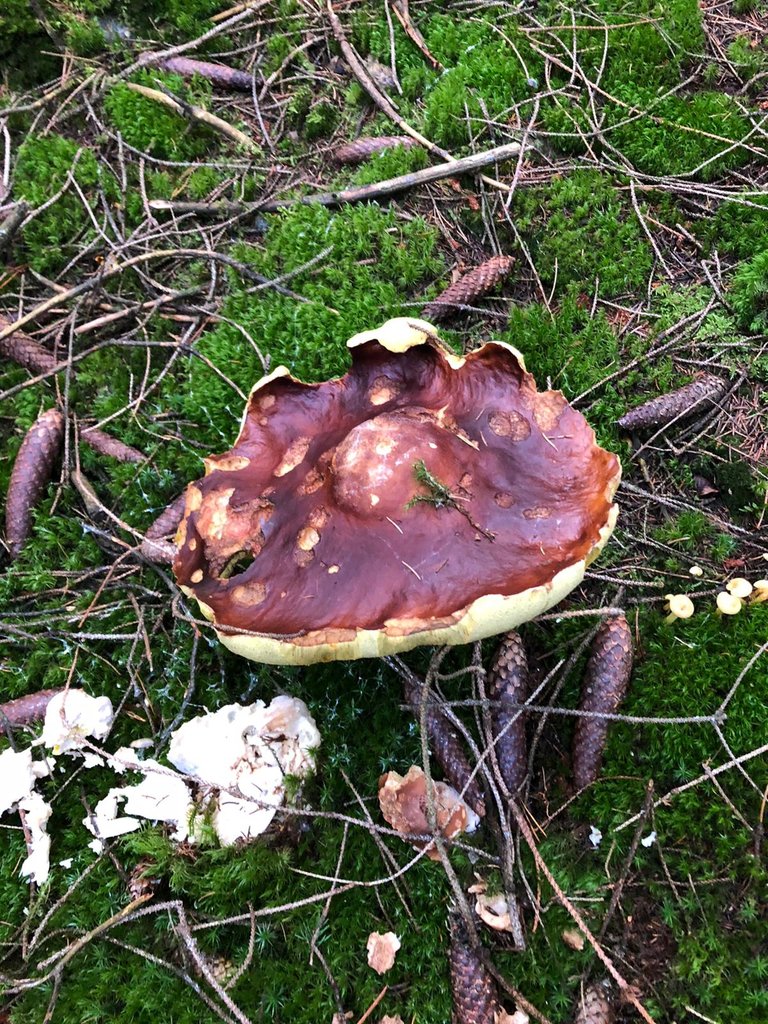Chestnut boletus-a good alternate for porcini mushrooms but...
Hello everyone!
Today I've got something for those who collect mushrooms-the Chestnut boletus:
Odor:
Mushroomy pleasant, faintly acidic.
Taste:
Nutty, mushroomy.
Cap:
3-15 (25) cm Ø, dark to light brown, olive brown, smooth, moist greasy, fine velvety, dull, shiny when wet.
Flesh:
Whitish to light yellow, +/- strongly bluish if you put pressure on it
Peduncle:
5-12 (15) cm long, 1-5 (6) cm diam. thick, brownish to yellowish brown, longitudinally veined, no reticulation, cylindrical, base thickened, thickly bulbous and +/- curved and slightly pointed downward, pedicel bark with ingrown grain.
Tubes:
Yellowish, greenish-yellow, turning blue-green on pressure, roundish, fine-pored, detachable, old spongy, bulging attached.
Spore powder color:
Olive brown (10-15 x 4-6 μm, smooth, basidia two or four sterigmata, cystidia 40-50 x 7-10 µm, smooth, thin-walled, hyaline, HDS pileipellis 5-8 µm wide, golden in KOH, terminal cells cylindrical with rounded tips).
Occurrence:
Mixed forest, coniferous forest, likes acid soil, symbiotic fungus, summer to late fall.
Genus:
Tubers, old Felt Tubers, recently it is supposed to belong to the Thick Tubers relatives (Genus: IMLERIA = Chestnut Tubers).
Risk of confusion:
Red-legged boletus, Gall boletus, Boletus, Fair-legged boletus, Goat's lip, Sand boletus, Moravian felt boletus, Golden-pored boletus, False appendage boletus, Tufted felt boletus, Appendage boletus.
Chemical reactions:
Ammonia (saltpeter) on cap black with blue-green tinge, negative in flesh, KOH on cap blackish maroon to somewhat orange, pale orange in flesh. Ferrous sulfate negative to somewhat gray in the flesh, negative or blackish olive on the cap. Blue in the lamellae with Melzer J+ (amyloid reaction).
Speciality:
Very good dried mushroom with seasoning character, it improves any mushroom dish.
Comment:
Unfortunately, this mushroom is heavily contaminated with cesium 137 - but we still like to eat it!
It is worthy of the boletus!
We found the most chestnut boletus after Chernobyl and as some magazines reported, this very mushroom should absorb the radioactive substances most intensively. If it is not more than 10 kg a year, there should be no significant health damage, but the decision must always make everyone himself. For children or pregnant women at least in larger quantities not really recommended.
Enjoyed raw it is considered incompatible, it contains xerocomic acid! We recommend a minimum cooking time of 15-20 minutes, since these already often led only little cooked to easy poisoning symptoms.
In addition to cesium 137, it also absorbs other traces of heavy metals, such as mercury, cobalt and nickel, in varying amounts. These are also considered harmless if not consumed in excess.
Tip:
For mushrooms without a net on the stem or barely visible net on the stem with yellowish tubes, a taste test is the safest way to decide if it is not an inedible bitter gall bolete or a root bitter bolete. Be careful: Your whole meal could be ruined
-Summarized: Even though the cesium 137- it's still worth it collecting it...I ate a lot of them and I'm still totally fine...And in contrast to the porcinis it's more often...So I can really recommend it...
But now I'm just showing off with some nice pics😘


awesome mushroom, and nice pics -- cheers!
Thanks
Hi ximlouiii,
Visit curiehive.com or join the Curie Discord community to learn more.
What an informative post on this little fun-guy. I'd love to see a recipe making use of this foraged find.
Thanks for sharing.
@NaturalMedicine supports wellness of body, mind, soul and earth on HIVE.
Come say hi via Lotus Chat or drop by our Hive Community - we'd love to have you!